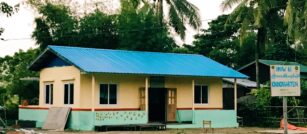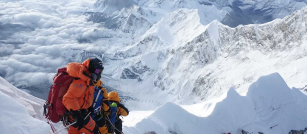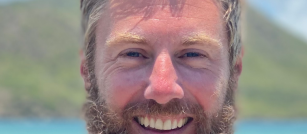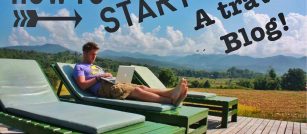Finding Relaxation Without Compromise on Your Journey
In today’s fast-paced world, travel represents more than just a change of scenery—it offers a precious opportunity to disconnect, recharge, and rediscover yourself. Yet for many travelers, the pursuit of relaxation is often tempered by concerns about safety. The good news is that you don’t have to choose between unwinding and staying secure. With thoughtful planning and awareness, you can create a journey that delivers both peace of mind and genuine relaxation.
Table of contents
- Finding Relaxation Without Compromise on Your Journey
- The Delicate Balance
- Smart Destination Selection
- Accommodation: Your Safe Haven
- The Technology Balance
- Local Connections, Authentic Safety
- Mindful Movement
- The Art of Preparation Without Paranoia
- Embracing Flexibility as a Safety Strategy
- The Journey Within
The Delicate Balance
The ideal vacation strikes a perfect balance between adventure and security, between spontaneity and preparation. Finding this equilibrium begins long before you pack your bags. It starts with understanding that relaxation isn’t merely the absence of your daily responsibilities—it’s a state of mind that flourishes when you feel genuinely secure in your surroundings.
Sarah Chen, a frequent international traveler, describes this balance perfectly: “The most relaxing trips I’ve had weren’t necessarily at the most luxurious resorts, but in places where I felt completely safe to let my guard down. That security is what allowed me to truly disconnect.”
Smart Destination Selection
Your journey toward worry-free relaxation begins with choosing the right destination. While exotic locales might call with their promise of unique experiences, it’s worth researching safety records, political stability, and health concerns before committing.
Consider destinations that have established reputations for both visitor safety and relaxation potential. Countries like Portugal, Japan, New Zealand, and Singapore consistently rank high on both safety indices and traveler satisfaction surveys. These destinations have developed tourism infrastructures that prioritize visitor well-being without sacrificing authentic cultural experiences.
Within any country, some regions offer better safety profiles than others. Even in countries with overall high safety ratings, urban centers may present different concerns than rural areas. Look beyond national statistics to understand the specific safety landscape of your intended destination.
Accommodation: Your Safe Haven
Your accommodation choice forms the foundation of your travel experience. It’s where you’ll return after each day of exploration, where you’ll rest and rejuvenate. Selecting the right place to stay is perhaps the single most important decision affecting both your relaxation and safety.
“Your hotel or rental should be your sanctuary,” explains travel security consultant Robert Winters. “It should meet basic security standards while also providing the comfort and amenities that help you decompress.”
When evaluating potential accommodations, consider both physical security features and comfort elements. Look for properties with secure entry systems, good lighting, and professional staff. At the same time, assess whether the environment will contribute to your relaxation goals—whether that means a quiet location, wellness facilities, or natural surroundings.
Despite careful research, accommodations don’t always meet expectations or safety standards. If you experience a serious safety lapse or injury at your accommodation, it may be worth consulting a professional like the hotel injury lawyer ChopinLawFirm.com, who specializes in helping travelers who’ve experienced preventable accidents during their stays.
The Technology Balance
Digital devices can either enhance your travel security or undermine your relaxation—often both simultaneously. Used mindfully, technology offers valuable safety tools: translation apps, GPS navigation, emergency contact capabilities, and instant access to safety information.
However, these same devices can tether you to work stresses and prevent you from fully immersing in your destination. Consider adopting a balanced approach to technology during your travels:
Use dedicated travel apps that enhance safety without requiring constant connectivity. Many safety apps now work offline, storing essential information locally on your device.
Establish specific “connected” periods during your day, rather than remaining constantly online. Use these windows to check in with loved ones, confirm upcoming plans, and then return to present-moment awareness.
Consider a dedicated travel device—perhaps an older smartphone loaded only with essential apps—rather than bringing your primary work device.
Local Connections, Authentic Safety
One often overlooked aspect of safe, relaxing travel is the value of local connections. Building relationships with locals—whether your hotel concierge, tour guides, or residents you meet—provides both enhanced safety and more authentic experiences.
Local contacts can advise on areas to avoid, current safety concerns not mentioned in guidebooks, and emergency resources. They can also direct you to genuine relaxation opportunities that remain undiscovered by mass tourism.
Mariana Lopez, a travel writer specializing in solo journeys, emphasizes this approach: “In every new city, I establish what I call my ‘local safety net’—a concierge I trust, a cafe where the staff knows me, a guide who understands my interests. These connections not only make me safer but also dramatically enhance my experience.”
Mindful Movement
How you move through your destination significantly impacts both safety and relaxation. Rushed transitions between activities or locations create stress and increase vulnerability. Instead, build buffer time into your itinerary, allowing for mindful movement.
Consider walking when possible—it’s often the safest form of transportation in unfamiliar places, allowing you to remain aware of your surroundings while reducing your dependence on unfamiliar transit systems or unvetted drivers. Walking also provides natural opportunities to decompress between activities.
When longer distances require other transportation, research options thoroughly. In many destinations, official taxi services or established rideshare companies provide the optimal balance of convenience and security.
The Art of Preparation Without Paranoia
Effective preparation enhances relaxation rather than diminishing it. Knowing you’ve taken reasonable precautions allows you to be more present and engaged during your journey.
Create digital and physical copies of important documents. Establish check-in protocols with someone at home. Research local emergency numbers and healthcare options. Pack a basic first-aid kit customized to your destination and activities.
Then, once these preparations are complete, give yourself permission to release anxiety. Your preparation serves as a foundation for relaxation, not a manifestation of worry.
Embracing Flexibility as a Safety Strategy
Perhaps counterintuitively, building flexibility into your travel plans enhances both safety and relaxation. Rigid itineraries create stress when unexpected circumstances arise, as they inevitably do during travel.
Lauren Morgan, a travel resilience coach, suggests the “70/30 approach” to travel planning: “Structure about 70% of your itinerary with must-see attractions and secured accommodations. Leave 30% open for adaptation based on current conditions, local recommendations, and your evolving needs.”
This flexibility serves as a safety strategy by allowing you to adapt to changing circumstances—whether that’s a transportation strike, unexpected weather, or security concerns at a planned destination.
The Journey Within
Ultimately, the most profound relaxation comes not just from external safety measures but from developing internal resources for security and peace. Mindfulness practices, breathing techniques, and perspective shifts can dramatically enhance your ability to relax even when circumstances aren’t perfect.
Consider incorporating simple mindfulness moments throughout your travel day—three deep breaths before entering a new environment, a quick body scan while waiting in line, or a five-minute meditation before leaving your accommodation in the morning.
These practices don’t just enhance your subjective experience; they actually improve your safety by increasing situational awareness and reducing stress-related decision errors.
The intersection of relaxation and safety isn’t found in fortress-like resorts or in reckless abandonment of precautions. It exists in the thoughtful middle path where preparation meets presence, where awareness enhances rather than detracts from enjoyment. By embracing both security considerations and relaxation techniques, you can create a journey that refreshes your spirit while keeping you secure—the true definition of travel well-being.
Remember, never travel without travel insurance! And never overpay for travel insurance!
I use HeyMondo. You get INSTANT quotes. Super cheap, they actually pay out, AND they cover almost everywhere, where most insurance companies don't (even places like Central African Republic etc!). You can sign-up here. PS You even get 5% off if you use MY LINK! You can even sign up if you're already overseas and traveling, pretty cool.
Also, if you want to start a blog...I CAN HELP YOU!
Also, if you want to start a blog, and start to change your life, I'd love to help you! Email me on johnny@onestep4ward.com. In the meantime, check out my super easy blog post on how to start a travel blog in under 30 minutes, here! And if you just want to get cracking, use BlueHost at a discount, through me.
Also, (if you're like me, and awful with tech-stuff) email me and my team can get a blog up and running for you, designed and everything, for $699 - email johnny@onestep4ward.com to get started.
Do you work remotely? Are you a digital nomad/blogger etc? You need to be insured too.
I use SafetyWing for my digital nomad insurance. It covers me while I live overseas. It's just $10 a week, and it's amazing! No upfront fees, you just pay week by week, and you can sign up just for a week if you want, then switch it off and on whenever. You can read my review here, and you can sign-up here!













 As you know, blogging changed my life. I left Ireland broke, with no plan, with just a one-way ticket to Thailand
and no money. Since then, I started a blog, then a digital media company, I've made
more than $1,500,000 USD, bought 4 properties and visited (almost) every country in the world. And I did it all from my laptop as I
travel the world and live my dream. I talk about how I did it, and how you can do it too, in my COMPLETELY FREE
Ebook, all 20,000
words or so. Just finish the process by putting in your email below and I'll mail it right out to you immediately. No spam ever too, I promise!
As you know, blogging changed my life. I left Ireland broke, with no plan, with just a one-way ticket to Thailand
and no money. Since then, I started a blog, then a digital media company, I've made
more than $1,500,000 USD, bought 4 properties and visited (almost) every country in the world. And I did it all from my laptop as I
travel the world and live my dream. I talk about how I did it, and how you can do it too, in my COMPLETELY FREE
Ebook, all 20,000
words or so. Just finish the process by putting in your email below and I'll mail it right out to you immediately. No spam ever too, I promise!
